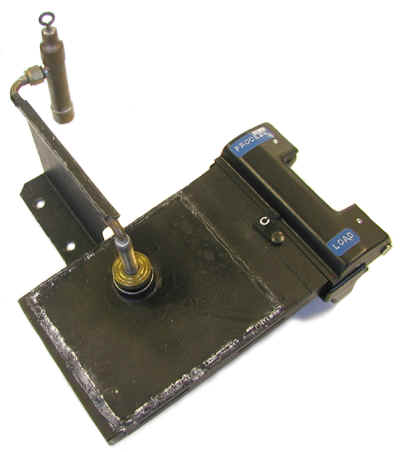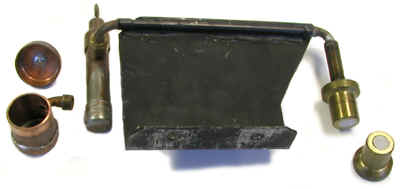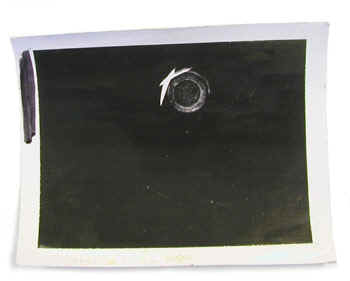Polaroid Film Detector for Radon (ca. late 1960s)

This unusual "home-made" device, which was probably used for leak testing radium sources, was built by Paul Bedrosian at the Public Health Service Radiological Health Laboratory in Montgomery Alabama. It most likely dates from the late 1960s.
The radium source being tested would have been placed in the small copper holder (upper left hand corner of the photograph to the left) which was attached to the end of a bent 1/4" copper tube approximately 8 inches long. A shorter holder with a larger diameter could also be used (left side of top right photo). Any leaking radon would have diffused to the other end of the tube where there was a small brass fitting with a zinc sulfide screen. Any alpha particles emitted by the radon and its decay products would have produced scintillations in the zinc sulfide. These scintillations would have been recorded on the Polaroid film pressed up against the zinc sulfide screen. Any image created on the developed film, as in the developed photo shown above, would have indicated a leaking source.


References
- Paul Bedrosian. Photographic Technique for Leak Testing Radium Sources. American Journal of Roentgenology and Radium Therapy. Vol. 102: 207-212. 1968.
- Paul Bedrosian. Photographic Technique for Monitoring Radon-222 and Daughter Products. Health Physics. Vol. 16:800-802. 1969.
- Paul Bedrosian. Leak Testing Sources of Radium-226 by Radon Photography. Health Physics. Vol. 16:497-501. 1969.
